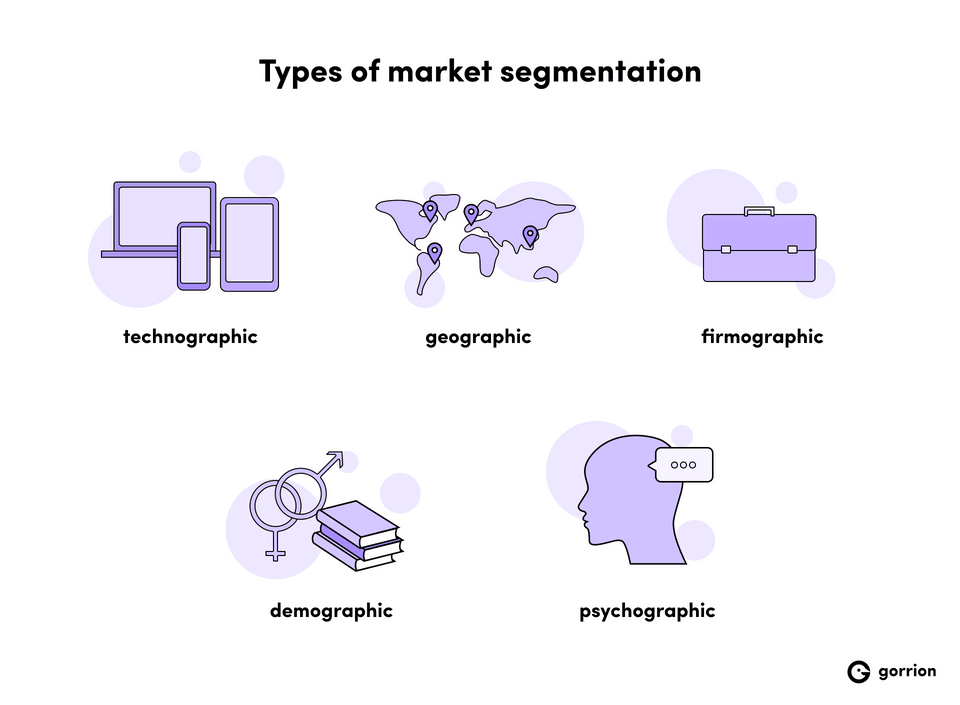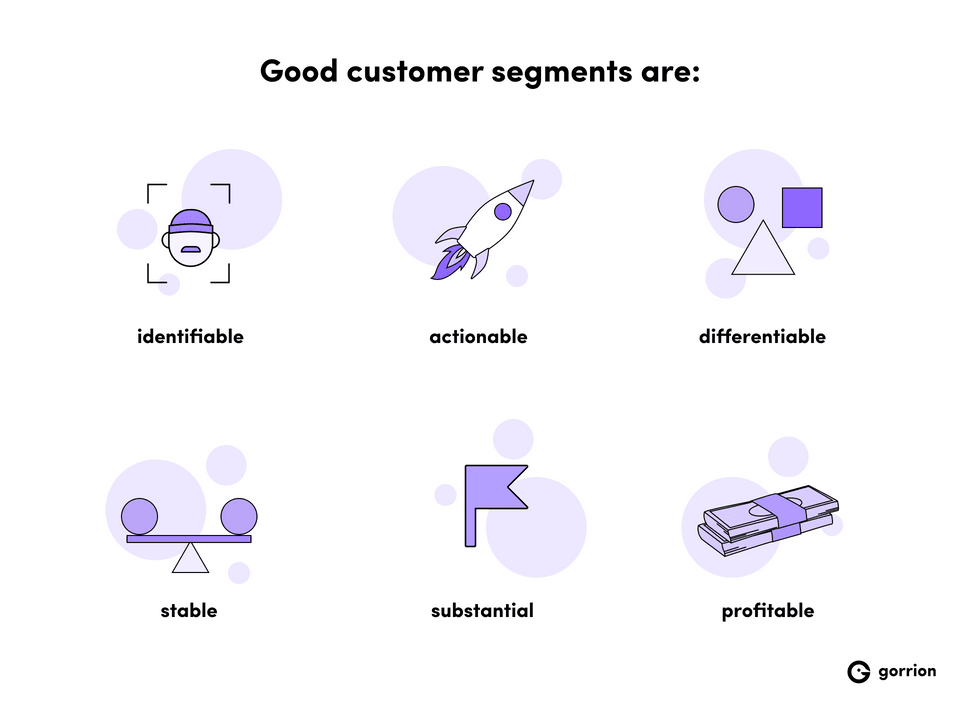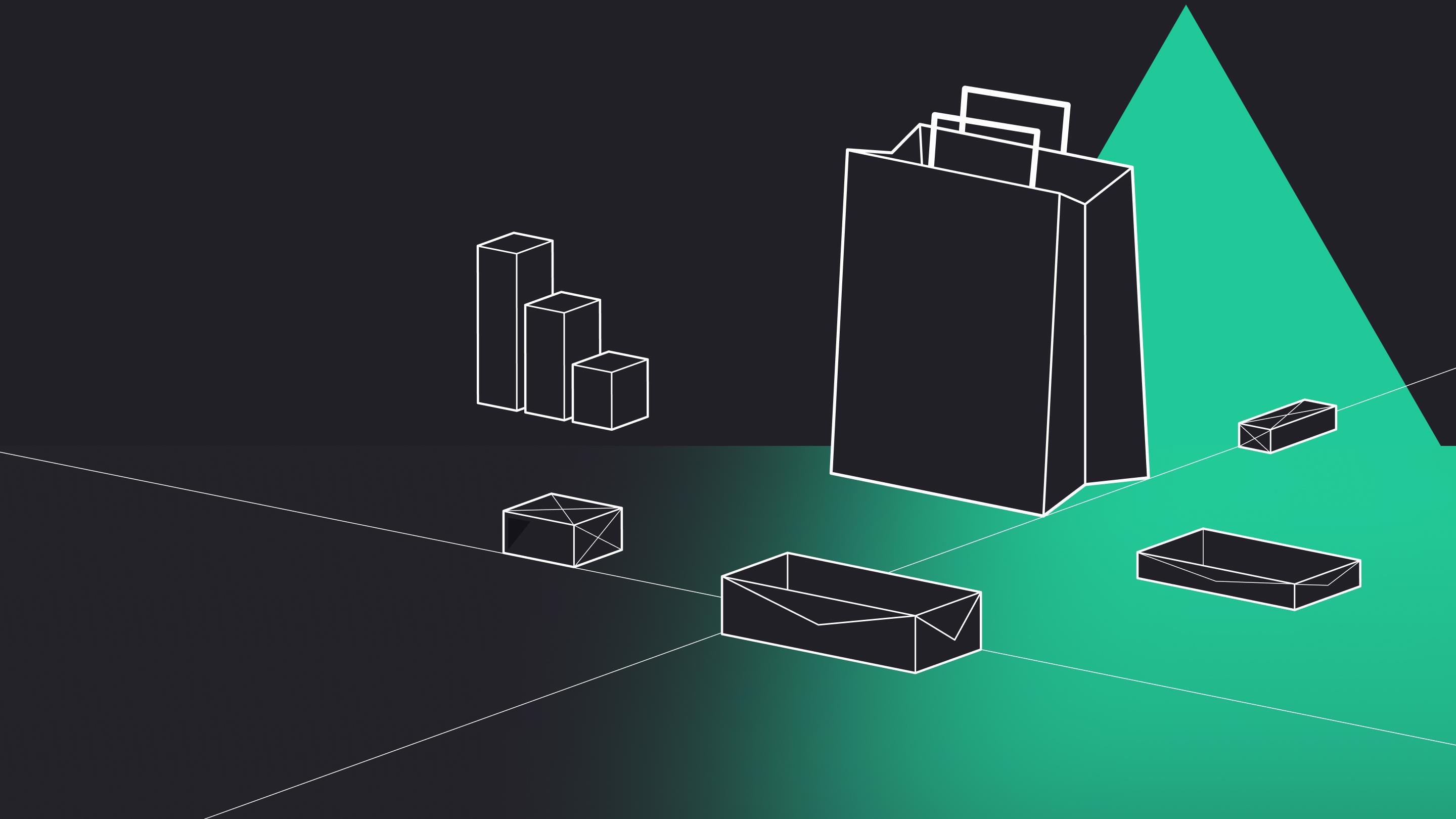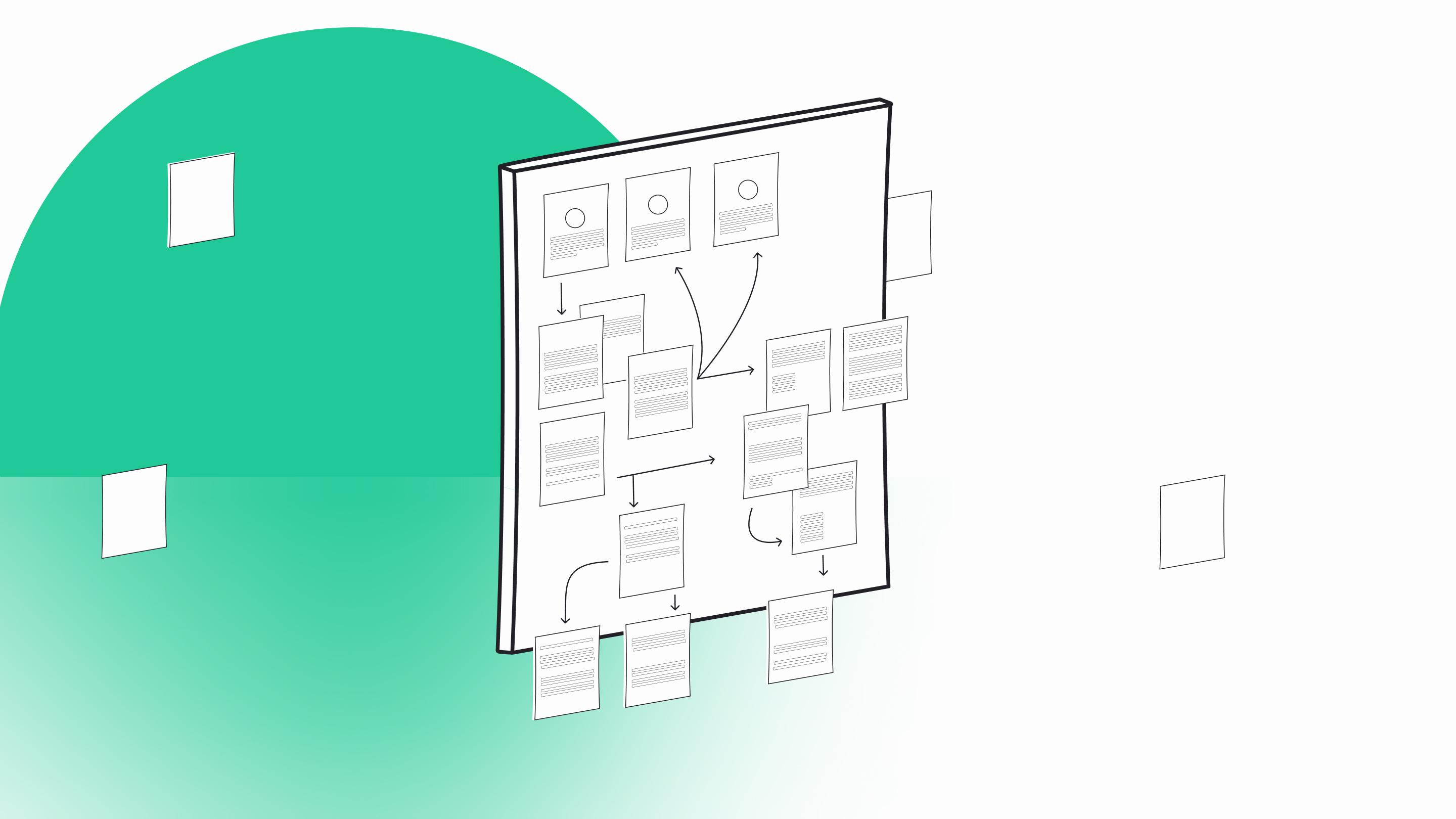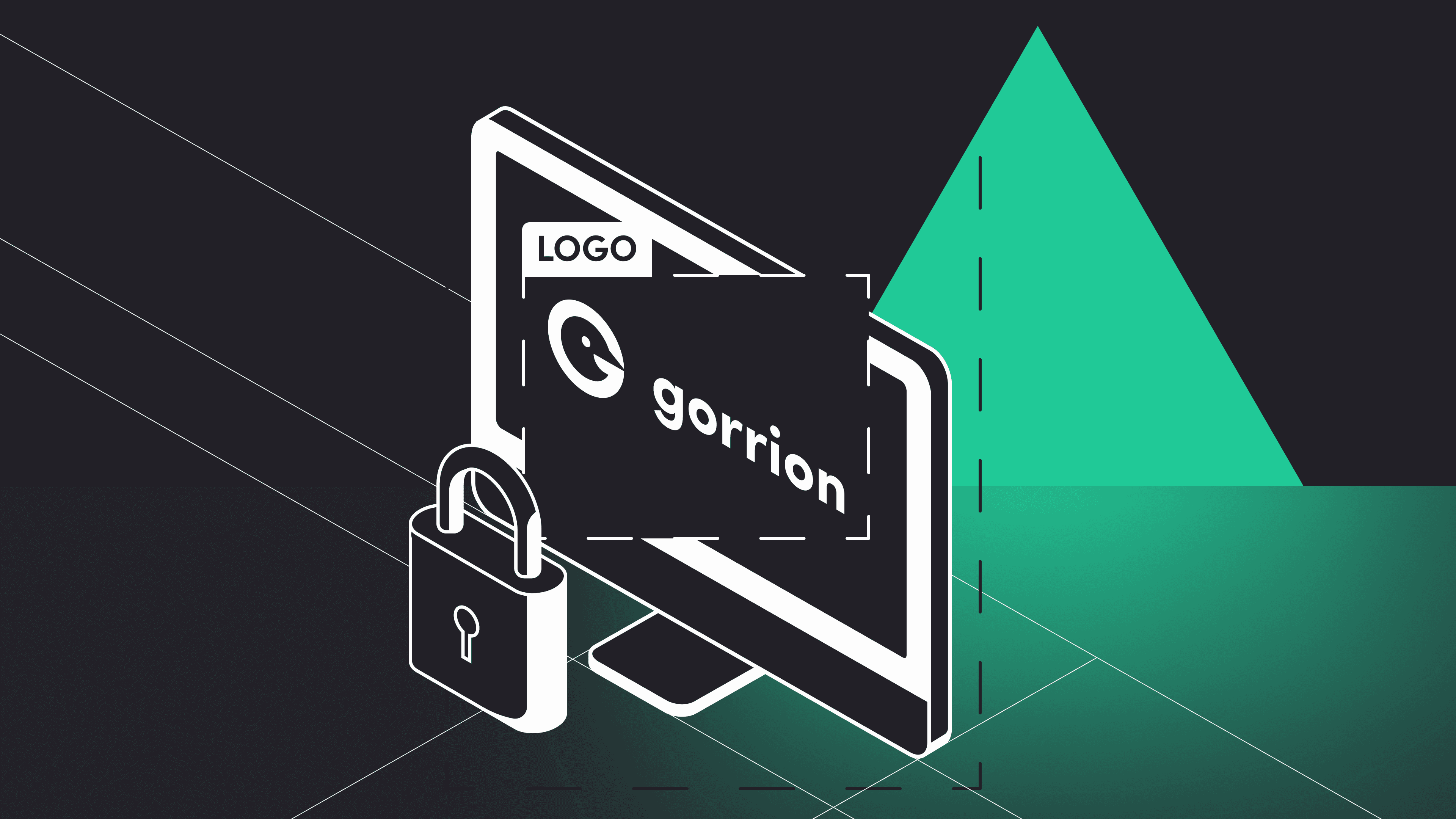

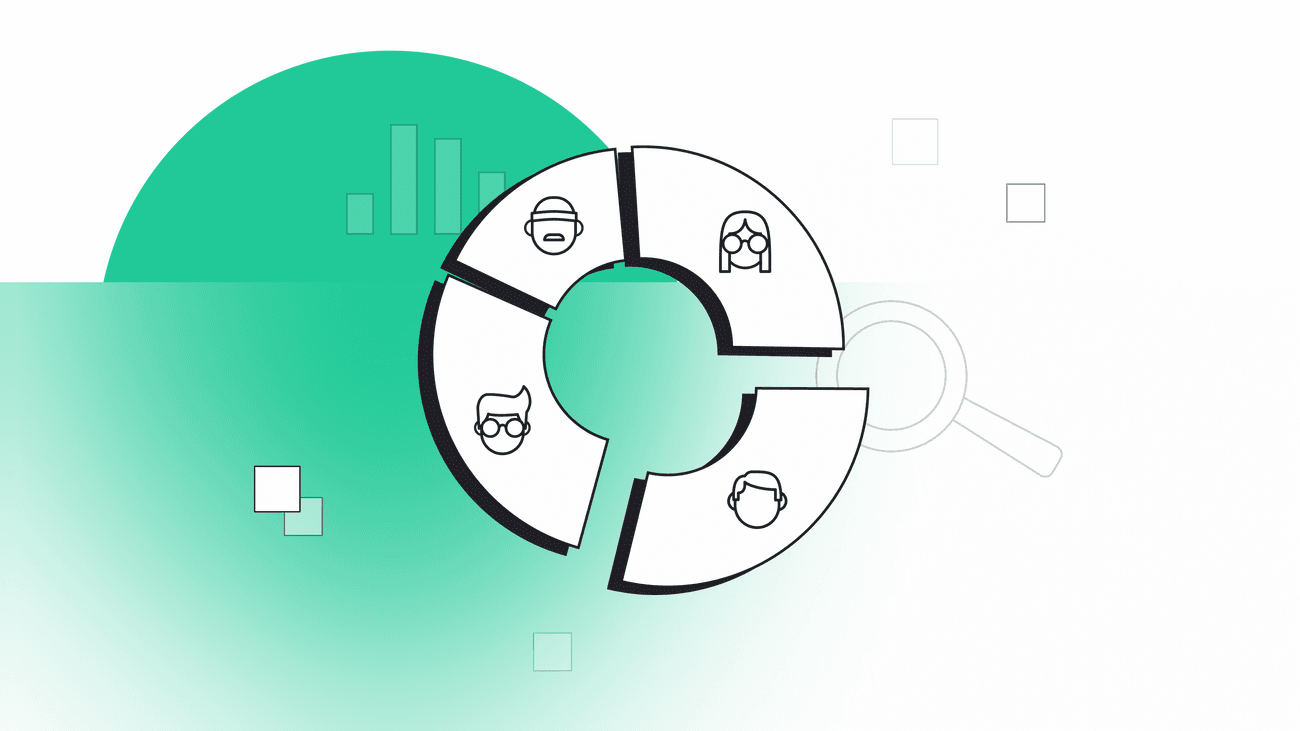
How market segmentation affects your SaaS product development
Market segmentation is grouping your customers based on their common characteristics. Why should you care? Because it gives you a better understanding of who your customers are, how you can reach them, and how to serve them better by developing software-as-a-service products that precisely answer their needs.
You may think that “market segmentation,” “buyer personas,” and “user journeys” are all just some mumbo-jumbo that fits squarely in the marketing department where it lives in a PDF no-one has ever opened since it was created by some overzealous marketer five years ago. Speaking from my own experience as a product marketing manager for a B2B SaaS company I can tell you: you are wrong.
Well, not entirely wrong. For many companies that’s exactly the story of what happens with their customer segmentation strategy. It goes to die in a folder that nobody but marketing has access to. What these companies don’t know though, is that they are missing out on having a North star of their product development strategy.
So if you’re one of those CEOs of a SaaS company that think they don’t need customer segmentation, here’s me trying to change your mind. This will be a quick exercise in critical thinking at the end of which you’ll hopefully have your own idea of what your customer segments are and how they impact your product development.
But first, let’s start with what market segmentation even is.
So, what’s market segmentation?
Basically, when you do market segmentation, you group your customers based on common characteristics they have. These can be their age (if you’re in B2C) or industry (if you’re in B2B) – more on that later. Market segmentation gives you a better understanding of who your customers are, how you can reach them, and how to serve them better.


Have a project in mind?
Let’s meet - book a free consultation and we’ll get back to you within 24 hrs.
A side note here: for SEO purposes a lot of web articles will tell you that “customer segmentation,” “user segmentation,” and “market segmentation” are different things, but they’re really not. Unless you’re doing a PhD in marketing, you can assume these are all one and the same thing and move on.
How it applies to real life
To give you a real example of what customer segmentation is and what it’s used for, let’s take one of Gorrion’s clients, Bioledger. They have a SaaS platform for tracing biofuel sustainability. In very layman terms, they track feedstock from where it is collected (e.g. cooking oil from a restaurant) on its way through the supply chain until it arrives at the biodiesel plant. Their product is necessary to have proof of origin and make sure the feedstock wasn’t tainted in the process (e.g., that someone didn’t substitute used cooking oil for palm oil). That way biorefineries can legally sell it as sustainably sourced.
You can see that there are two very different ends on the spectrum of Bioledger’s users. On the one hand, there are local suppliers who provide the feedstock. On the other – big corporations that turn it into biofuels. And in between there are collectors and traders that handle the exchange. There’s one biofuels market that actually hinges on all participants working together. But there’s a lot of segmentation as well.
Why do customer segmentation?
I’ll be the first to admit, most sources focus on why customer segmentation is important for marketing purposes. It helps you stay relevant to your audience, use targeted ads more efficiently, and overall develop a better marketing strategy. All of these benefits are true and incredibly important for people like me – marketers.
But they’re not so relevant for the executives, much less for the development teams. For them, the benefits of having a customer segmentation strategy lie elsewhere. Yet, conspicuously, sources that discuss customer segmentation for software products either entirely disregard or just brush over them.
Bioledger’s example should give you an idea why having a customer segmentation strategy is in fact crucial for product development. Despite fragmented market, they have one product for everyone. And that’s a conscious choice, what we call in the industry a product-market fit. For the product to work, it needs to encompass the entire process from start to finish, meaning it needs to be used at every stage. Yet it would be impossible to get local suppliers, collectors, and corporations to use an identical application, because it wouldn’t actually serve none of their purposes. Which is why the app looks different, is available on different devices, and offers different functionalities, depending on who’s using it.
What if I don’t have customer segments?
Right now you may think to yourself “Cool story, bro, but my app is not that complicated.” That’s a good thing, because Bioledger’s complexity makes it a perfect example to discuss here, but much harder to execute in real life, so you dodged a bullet here.
But I will bet you that if you take a closer look at your customer base (either actual, potential, or ideal), you’ll be able to group your customers into some categories. How? Ask yourself these questions.
- Do all my clients use the same hardware and software? Do they prefer Windows or iOS? Do they use laptops, tablets, or smartphones first? Do they use Google Workspace or Microsoft 365 environment?
- Do all my clients operate from the same country or region?
- Do all my clients work in the same industry and the same company size?
- Are all of my clients the same age, gender, status?
- Do all my clients have the same lifestyles, beliefs, attitudes, and priorities?
I’m pretty sure you said “no” to at least one of these questions, which means your customer base is not entirely homogeneous and you can distinguish some customer segments based on their characteristics. Let’s name them and see how they can affect software development.
Technographics
All preferences that pertain to technology are called technographics. This includes preferences in devices (smartphones, tablets, laptops), operating systems (macOS, Windows, Linux), software and applications (for example, whether they prefer Google Docs vs Word, or communicating via Messenger vs WhatsApp), and even social media!
Needless to say, technographics are one of the key factors you need to consider when developing software-as-a-service. Your product needs to follow its users. There’s no point in having a web-based app – even if it is the best and the most useful one – if it’s users are on mobile. Or developing a mobile app for Android when the majority of your users have iPhones.
Technographics are often related to other characteristics. For example, data shows that, in the US, iOS covers over half of the mobile market share, but in Europe it’s just 1/3. There’s also a correlation between the percentage of mobile vs computer users and their age, with Gen Z spending more time using smartphones and millennials – using laptops.
But there are also other technographic considerations, directly related to the app use. For example, in case of Bioledger there’s a simplified, mobile version of the app used by traders and collectors to input the data easily. On the other hand, there’s a more powerful web version that corporations can use for advanced tracking and analysis.
Geographics
These are all the characteristics that depend on where your customer is. It can be their nationality or region (whether the “region” actually means a continent or a city), or languages they speak.
They affect SaaS product development substantially, regardless of whether you operate in B2C or B2B market. The most obvious issue is that if your software is available in different countries, you will probably want to translate it at some point, at least into some of the most popular languages. This is not as easy as just translating the user interface. It goes deeper into the software architecture and for that reason alone, it should be taken into account early in the development process. Otherwise, it will be quite a hassle to localize your app. The work done early will pay off later.
Firmographics
These are the characteristics typical to companies and sometimes called “company demographics.” So things like the company size, industry, location, legal entity, etc.
Bioledger’s example shows quite clearly why these are relevant to product development, at least in B2B. The company sells to widely different user segments – both small entrepreneurs and blue chip corporations. There is no way that the same functionalities will appeal to both. So one challenge was to design one application that would serve all differently. Another challenge now is to balance the development of new features in a way that will satisfy both user and business needs. This is only possible because Bioledger is aware of their customer segments and how these relate to their strategy.
Demographics
Demographics relate to age, gender, level of education, occupation, etc. But they also include factors such as income or even ownership.
Just like firmographics are primarily relevant in B2B, demographics are more relevant in B2C products. But at the end of the day, even though your client may be a company, your user will always be a person. So demographics still play a significant role in all product development, even for B2B.
For example, did you know that color blindness affects up to 8% of male population, but less than 1% of female population? While we firmly believe all applications should be accessible to everyone, you can see how designing for the color blind is especially important in software with higher rates of male users.
Psychographics
It might be harder to put a finger on what psychographics are, but generally you can think of these as clients’ personality, values and opinions, or lifestyle.
Again, these are much more relevant for B2C. But much like with demographics, as long as your users are people, their psychographics are relevant for product development. They can affect their willingness to try new technologies and solutions, or alter their habits, like with the example I’ve already mentioned of Gen Zs using smartphones.
6 characteristics of good customer segmentation
Now that we’ve established that your customers are indeed different from one another, let’s see if these differences are significant enough to put them into separate categories.
Generally, there are a few considerations that make a customer segment “good.” Again, to make it easier, you can ask yourself these question to determine if your segments are sound.
- Are my segments identifiable? Do I have access to the data that identifies a customer as belonging to a group?
Some of the customer data is quite easy to obtain without having to involve the customer at all. For example, you can learn what device, OS, or browser they’re using just by implementing Google Analytics. You can even monitor how they’re using your platform with tools like Hotjar or Microsoft Clarity. But with most information, you will have to ask your clients for feedback. And while providing one’s date of birth or gender is quite standard and unproblematic, obtaining psychometric data may prove much more challenging as it usually requires some deeper user research.
- Are they actionable? Is there a way I can use the data I have?
Getting customer data is one thing, acting upon it is a whole new challenge. You need to ask yourself if there is anything you can (or have to) do for a particular customer segment. Bioledger is a perfect example here as they have several very distinct segments where users basically identify themselves by choosing a user role that is customized for that segment.
- Are they differentiable? To what extent one group differs from the other?
I’ve spent a fair amount of time in my career listening to C-level executives argue why CTOs are a different than CEOs and therefore should make up a different customer segment. And I do obviously agree, CEOs and CTOs have very different functions in the company which may have an impact on the product. Or it may not. It very much depends on the product.
If the only differentiator between your customer segments is the function (or location, or even gender), you have to ask yourself how its impact your bottom line. And if it doesn’t – it’s not a separate customer segment, even if instinctively it feels like it.
- Are they stable? Will these groups change over time?
Some characteristics are pretty stable and bound to stay the same over time. But others – especially technographic factors – are pretty volatile. When segmenting your groups, you need to consider how stable they are and how it will affect product development down the line.
- Are they substantial? What percent of my target does each customer segment constitute?
Imagine you’re developing a B2B platform with a potential customer base of ten thousand companies and there’s a cluster of 100 of them that are similar. Should they be a separate customer segment or not? Well, if you consider that 100 companies make up 1% of your (potential) customers, perhaps you should start thinking in bigger segments, unless you want to end up with a 100 different segments.
- Are they profitable? What can I gain from targeting that customer segment?
Think about the previous example again – there’s 100 companies that all need the same feature from your platform. It’s essential for them, but useless for the remaining 9.900 companies. Do you develop that feature or not?
And what if I told you that this 1% of companies accounts for 90% of your potential revenue? Would you develop it then?
Obviously, profitability should always be top of mind for you and your development team. So even if a customer segment defies all the rules, but has a potential to make money – go for it!
How did it go?
So, how did you like that exercise in customer segmentation? Did you find your user groups? Perhaps gotten some ideas for your product roadmap? I hope you did!
In my experience customer segmentation done right can have hugely positive impact on your product development. It can both speed it up (reducing the costs) and make the final product more profitable, all at the same time.
We’ve seen this at Gorrion time and time again, not just with Bioledger. Understanding customer segments and user stories is one of the first things we dig into when ideating with our clients. That’s because it helps us identify the project scope and set priorities, develop features that will delight the users, and validate our ideas as well as the final product. So don’t be fooled that customer segmentation belongs to the marketing team only – your delivery team will thank you for it!


Have a project in mind?
Let’s meet - book a free consultation and we’ll get back to you within 24 hrs.
At Gorrion, Dominika Stankiewicz manages content. Having spent a decade in marketing and communications, she’s the master of the written word and the guardian of style. On our blog she shares her experience in B2B product marketing to help SaaS companies plan and execute their go-to-market strategy. In her spare time, she reviews manuscripts for publishers and bakes cakes. She loves cats, books, and American football.
